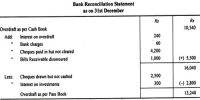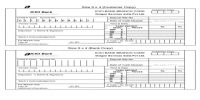Ratio Analysis
Ratio is an expression of one number in relation to another. Ratio analysis is the procedure of formative and interpreting the mathematical relationship between figures of financial statements. A ratio is a mathematical relationship between two items expressed in a quantitative form. An absolute figure does not convey much meaning. Generally, with the help of other related information the significance of the absolute figure could be understood better. Ratio analysis is used to evaluate various aspects of a company’s operating and financial performance such as its efficiency, liquidity, profitability and solvency. In addition, ratios can be used in a form of trend analysis to identify areas where performance has improved or deteriorated over time.
For example- Nila earns Rs.50,000 profit in her business while Nivedita earns Rs.40,000 profit. Whose business is more profitable? Instantly we may say that as Nila earns more profit, her business is more profitable. But in order to answer this question we must know what were the sales made by both of them. Suppose Nila has made a sale of Rs.4,00,000 and Nivedita Rs.3,00,000. Now we can calculate the percentage of profit earned on the sales (Profit / Sales x 100) to know whose business is more profitable.
Nila = 50,000/40,000 x 100 = 12.5 %
Nivedita = 40,000/30,000 x 100 = 13.33%
From the above calculations it is clear that the profitability of Nivedita is more than Nila, because, she is getting 13.33% return and Nila is getting only 12.5%.
Thus, the above example explains that absolute figures by themselves may not communicate meaningful information. Hence, business results are understood properly only when the relevant figures are considered together.













